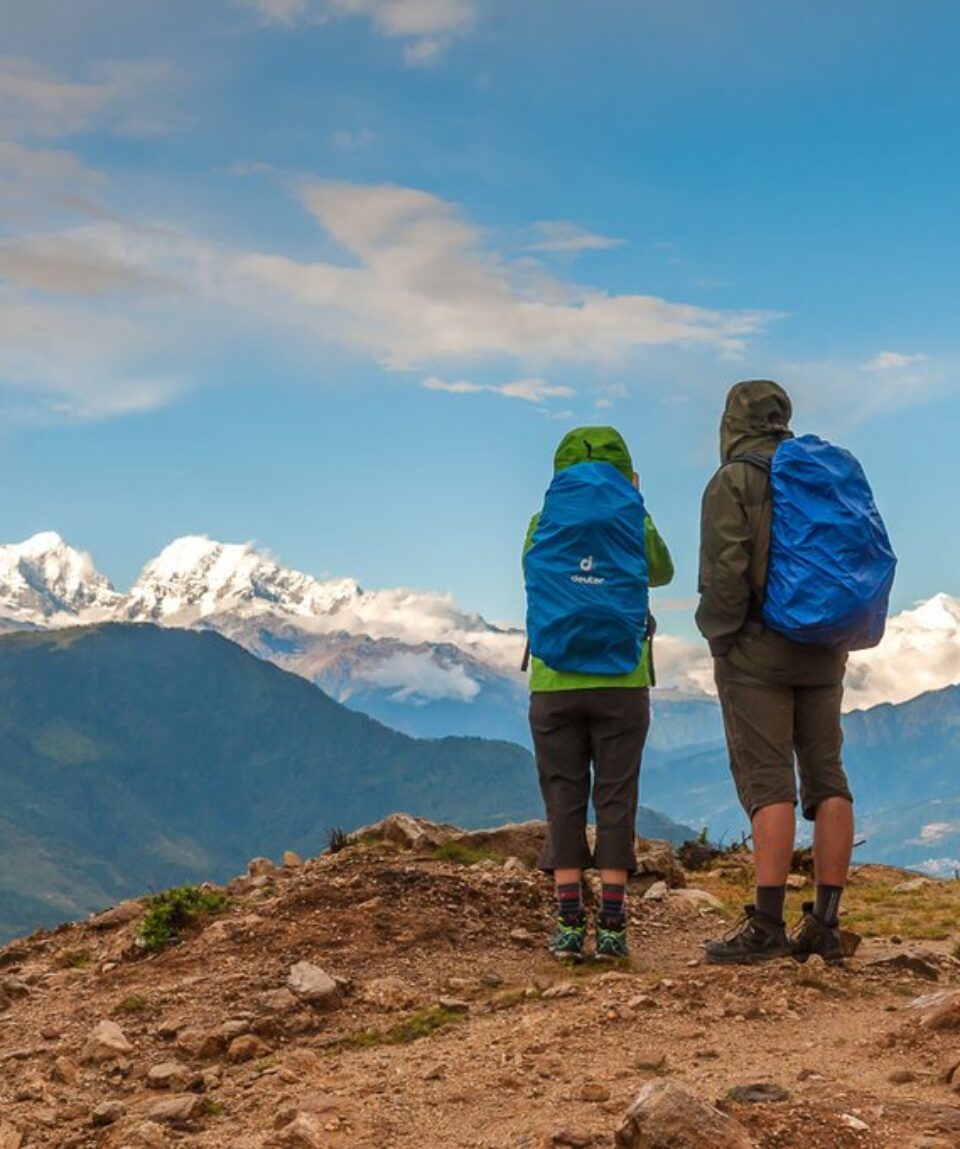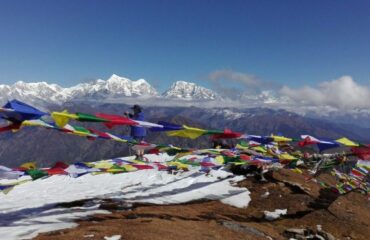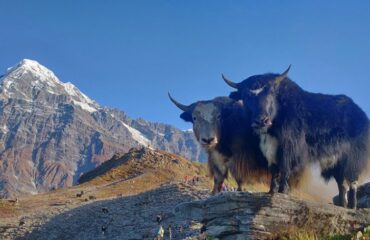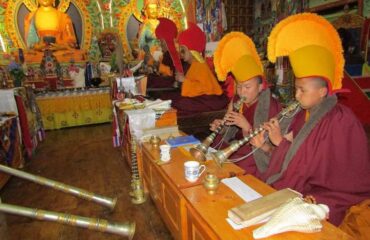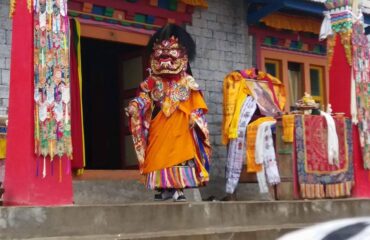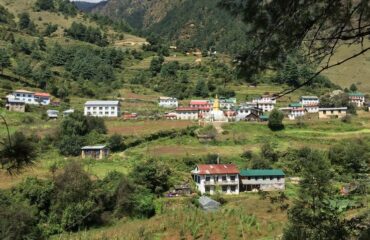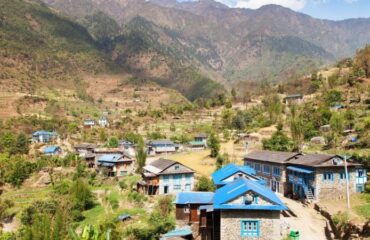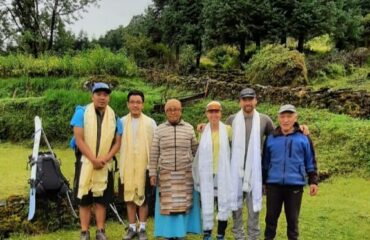Pikey Panggom Trek
fromShort trek with great views of Everest and closest alternate to trekking in crowded Everest region.
-
Reviews 0 Reviews0/5
-
Vacation Style Holiday Type
-
Hiking
-
-
Activity Level Moderate
-
Group Size Medium Group
Pikey Peak Trek is a newly opened short Trek with great views of Everest and the closest alternative to trekking in the crowded Everest region. This unique trekking route in the Solukhumbu region invites all the trekking and hiking lovers to explore the Everest and lower Khumbu region along with the dramatically changing landscapes. It offers beautiful sunset and sunrise views over the towering peaks of this region along with the unique experience of Sherpa culture and lifestyle. The newly introduced trekking route provides the trekkers with an off-beaten trail trekking experience. This is newly introduced and less discovered trekking in the lower Everest region which offers the best of Sherpa culture and the Himalayan scenery.
This short Trek is best suitable for fit, sportive, and adventurous trekkers and for all those adventure lovers who have limited time to stay in Nepal or who prefer a comparatively easy Everest trekking experience with excellent Himalayan views avoiding the Everest crowed. This trek is ideal for those trekkers looking for a more basic, natural, cultural, old aged, and adventurous experience offering a most memorable experience. Adding Panngom village to your itinerary enables you more walking days with the great experience of Sherpa cultures and Monasteries.
Flexible Itineraries
There are several different routes to Pikey Peak and local people’s trails within the lower Khumbu area that engages getting to Pikey Peak. The usual durations (starting and ending in Kathmandu) are from 5 to 7 days depending on what you’re planning for; we can craft a good tailored made trip based on how much time you have.
- Airport transfers and escort.
- All meals while on the trek. (Breakfast, Lunch, Dinner, Tea, Coffee, Hot beverage)
- Accommodation during your whole trip at local lodges.
- Helicopter cost and transportation from Kathmandu to trek starting point as mentioned on itineraries.
- English speaking government-licensed Sherpa guide.
- Porter Service (2 trekkers = 1 porter)
- Staff cost including their (Salary, domestic airfare, equipment, food, accommodation, and insurance )
- Assistance Sherpa guides as required
- National park fees.
- All permits to enter the local municipality
- 3 nights accommodation at tourist standard category hotel in Kathmandu with breakfast on twin sharing basis
- All guided sightseeing tours in Kathmandu and entry fees.
- All ground transportation on comfortable private vehicle
- All government and local taxes
- International airfares
- International Airport Departure Tax and visa fees
- Trekking Equipment
- Major meals, Lunch, and dinner during your stay in Kathmandu
- Any type of personal expenses, such as alcoholic beverages and drinks, phone, and laundry.
- Rescue & travel insurance, trip cancellation costs, accident or health emergency, evacuation, loss, theft or damage to baggage, and personal effects.
- Tips & Gratuities to porters and guides
- We strongly advise you to take out personal travel insurance.
- Day 1 Depart Home Country
- Day 2 En Route (Transit)
- Day 3 Arrival in Kathmandu (1,300m/4,264ft) and transfer to hotel
- Day 4 Drive to Dhap Bazaar (2850m /9350 ft) or Pattale (2625 m/8287) 7-8 hrs
- Day 5 Trek from Dhap Bazaar to Jhapre (2815m /9235 ft ) 4-5 hrs via Sigane
- Day 6 Trek from Jhapre to Pikey Base Camp ( 3640m /11942 ft) 6-7hrs
- Day 7 Trek to Bhanjang (2875 m/9432ft) via Pikey Peak( 4065m/1336 ft) 4-6 hrs
- Day 8 Trek to Junbesi (2680m / 8792 ft ) and trip to Thupten Choling Monaster: 4-6 hrs
- Day 9 Trek from Junbesi to Takasindu ( 2,931 m/9,616 ft)
- Day 10 Trek from Thaksindu to Kharikhola (2,050 / 6,726 ft ) 4-6 hrs
- Day 11 Trek to Panggom (2900m/ 9514 ft) 3-4 hrs
- Day 12 Explore Panggom village and hike around Panggom
- Day 13 Fly back to Kathmandu via helicopter
- Day 14 Casual day and sightseeing around Kathmandu and reserved day
- Day 15 Transfer to airport for international departure
- Day 16 En Route to Home Country
- Day 17 Arrive Home Country
The main emphasis while trekking is on keeping warm and dry while still being lightweight. You should bring a rucksack or backpack for the gear required during the day. Your pack should contain items such as warm clothes, a jacket, a camera, water bottles, a personal first aid kit, and snacks. The weight limit is 5kg. A porter will carry the rest of your personal equipment packed in a duffel or kit bag. The weight limit for your duffel bag is 15 kg however it is different in the case of peak climbing and expedition.
A Note on Packing
For your international flights, we recommend that you pack all your equipment in your two duffle bags or suitcase. Do not simply pack your backpack (since the straps can be damaged by the baggage handling machines). It is important to lock these bags for their trip. Depending on the airport, you may be able to put your travel locks on after TSA has searched the bags. If not, Lock the bags with Zip Ties. If the TSA cuts off the zip-tie to search your bag, they will replace it. You will still need the travel locks to lock your bags in the hotel and during the trek. Generally, you will take one duffel on the trek , and leave one in the hotel in Kathmandu with your belongings for your time in the city. Your trek in duffel will only be accessible in the evenings (with items such as changes of clothing, sleeping bag), and your day pack will hold vitals such as water, layering, blister kit, and camera.
FOOTWEAR
- Hiking Boots with ankle support. Make sure they are comfortable and you have worn them in before arriving in Nepal.
- Camp Shoes or Tennis Shoes
- Thick, warm wool and day hiking socks
- Camp Sandle
- Gaiters (Optional )
- Plastic bag to carry spare shoe
CLOTHING
- Lightweight Trekking pants
- Synthetic T-shirts, long-sleeve shirts
- Synthetic hiking pants, Zip-off pants
- Trekking trousers
- T-shirts – Lightweight, quick-drying
- Long-sleeved shirt
- Fleece jacket with wind-Stopper (With wood)
- Down vest and/or jacket
- Rain jacket or poncho (Gore-tex or equivalent)
- Rain pants (Gore-tex or equivalent)
- Down jacket medium weight
- Fleece or wool pants
- Synthetic Underwear
- Women sports bras, synthetic(for women)
- Waterproof (preferably breathable fabric) shell pants
- Long sleeve tops or shirts (not cotton).
- Microfleece.
- Mid to heavyweight fleece or synthetic/ Primaloft
HEAD & GLOVES
- Fleece gloves.
- Warms mittens and/or gloves.
- Wool or fleece hat.
- Sun hat
- Warm hat wool or synthetic that covers your ears
- Bandana or scarf (eg. Buff Headwear).
- Head torch. Bring extra batteries.
- Sunglasses with UV Protection
ACCESSORIES
- Lightweight Sleeping bag
- Trekking poles
- Basic First Aid Kit
- Daypack (Ruck Sack): Recommended size is around 30 litres. You need to have enough space to carry water
bottles, camera, snacks, and extra clothing. The pack should have a good waist belt. It is also a good
idea to bring a rain cover to keep the contents dry - Fleece or silk liner for your sleeping bag
- Stuff sacks for keeping your gear dry and organized (Optional )
- Thermo-rest sleeping (optional)
- Water bottles
- Small wash towel
- Sunscreen and lip salve
- Water purification tablets (Pristine, Biox Aqua or Aqua Mira).
- Favorite snack food.(Optional)
- Books and cards etc.(Optional)
- Camera with spare batteries and memory cards.(Optional)
- Insurance certificate.
- Earplugs (optional).
- Hand sanitizer
- Any personal medications
TOILETERS
- Quick-drying towel (medium-sized)
- Soap (preferably biodegradable)
- Toothbrush/paste (preferably biodegradable)
- Deodorants
- Face and body moisturizer
- Nail clippers
- A small mirror (optional)
- Tissue paper/ toilet roll
- Anti-bacterial Hand wash etc ….

